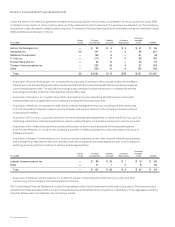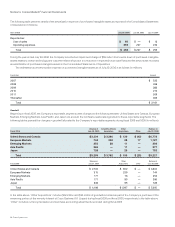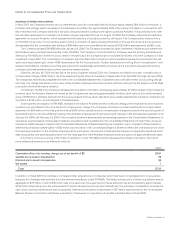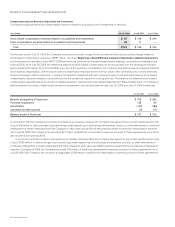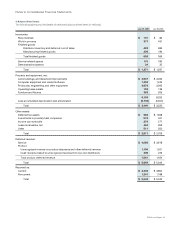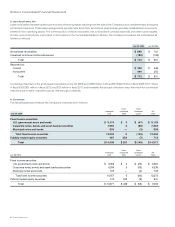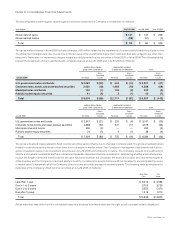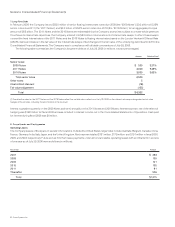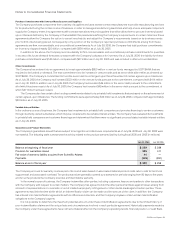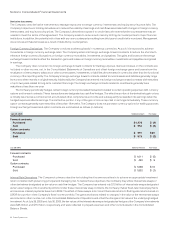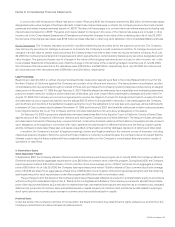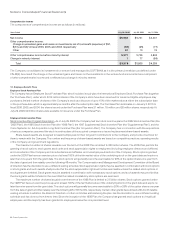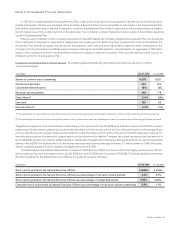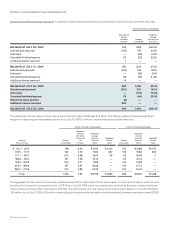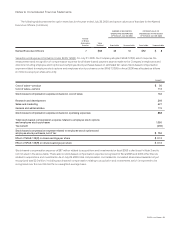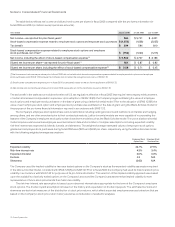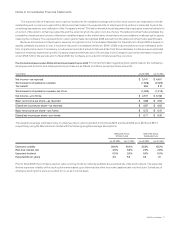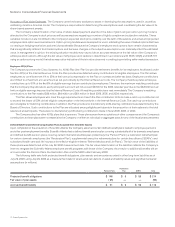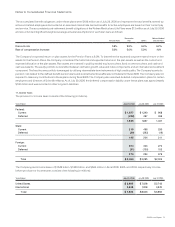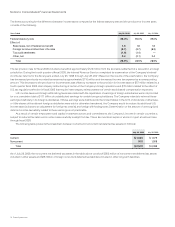Cisco 2006 Annual Report Download - page 61
Download and view the complete annual report
Please find page 61 of the 2006 Cisco annual report below. You can navigate through the pages in the report by either clicking on the pages listed below, or by using the keyword search tool below to find specific information within the annual report.
64 Cisco Systems, Inc.
Derivative Instruments
The Company uses derivative instruments to manage exposures to foreign currency, interest rate, and equity security price risks. The
Company’s objective in holding derivatives is to reduce the volatility of earnings and cash ows associated with changes in foreign currency,
interest rates, and equity security prices. The Company’s derivatives expose it to credit risk to the extent that the counterparties may be
unable to meet the terms of the agreement. The Company seeks to reduce such risks by limiting its counterparties to major nancial
institutions. In addition, the potential risk of loss with any one counterparty resulting from this type of credit risk is monitored. Management
does not expect material losses as a result of defaults by counterparties.
Foreign Currency Derivatives The Company conducts business globally in numerous currencies. As such, it is exposed to adverse
movements in foreign currency exchange rates. The Company enters into foreign exchange forward contracts to reduce the short-term
effects of foreign currency uctuations on foreign currency receivables, investments, and payables. The gains and losses on the foreign
exchange forward contracts offset the transaction gains and losses on foreign currency receivables, investments, and payables recognized
in earnings.
The Company does not enter into foreign exchange forward contracts for trading purposes. Gains and losses on the contracts are
included in other income, net, in the Consolidated Statements of Operations and offset foreign exchange gains and losses from the
revaluation of intercompany balances or other current assets, investments, or liabilities denominated in currencies other than the functional
currency of the reporting entity. The Company’s foreign exchange forward contracts related to current assets and liabilities generally range
from one to three months in original maturity. Additionally, the Company has entered into foreign exchange forward contracts with maturities
of up to two years related to long-term customer nancings. The foreign exchange contracts related to investments generally have
maturities of less than one year.
The Company periodically hedges certain foreign currency forecasted transactions related to certain operating expenses with currency
options and forward contracts. These transactions are designated as cash ow hedges. The effective portion of the derivative’s gain or loss
is initially reported as a component of accumulated other comprehensive income and subsequently reclassied into earnings when the
hedged exposure affects earnings. The ineffective portion, if any, of the gain or loss is reported in earnings immediately. These currency
option contracts generally have maturities of less than 18 months. The Company does not purchase currency options for trading purposes.
Foreign exchange forward and option contracts are summarized as follows (in millions):
Notional Amount Fair ValueJuly 29, 2006
Forward contracts:
Purchased $ 1,376 $ (2)
Sold $ 554 $ (3)
Option contracts:
Purchased $ 591 $ 20
Sold $ 573 $ (2)
July 30, 2005 Notional Amount Fair Value
Forward contracts:
Purchased $ 1,011 $ (5)
Sold $ 450 $ 9
Option contracts:
Purchased $ 1,028 $ 10
Sold $ 1,002 $ (7)
Interest Rate Derivatives The Company’s primary objective for holding xed income securities is to achieve an appropriate investment
return consistent with preserving principal and managing risk. To realize these objectives, the Company may utilize interest rate swaps or
other derivatives designated as fair value or cash ow hedges. The Company has entered into $1.0 billion of interest rate swaps designated
as fair value hedges of its investment portfolio. Under these interest rate swap contracts, the Company makes xed-rate interest payments
and receives interest payments based on LIBOR. The effect of these swaps is to convert xed-rate returns to oating-rate returns based on
LIBOR for a portion of the Company’s xed income portfolio. The gains and losses related to changes in the value of the interest rate swaps
are included in other income, net, in the Consolidated Statements of Operations and offset the changes in fair value of the underlying hedged
investment. As of July 29, 2006 and July 30, 2005, the fair values of the interest rate swaps designated as hedges of the Company’s investments
were $45 million and $15 million, respectively, and were reected in prepaid expenses and other current assets in the Consolidated
Balance Sheets.
Notes to Consolidated Financial Statements


